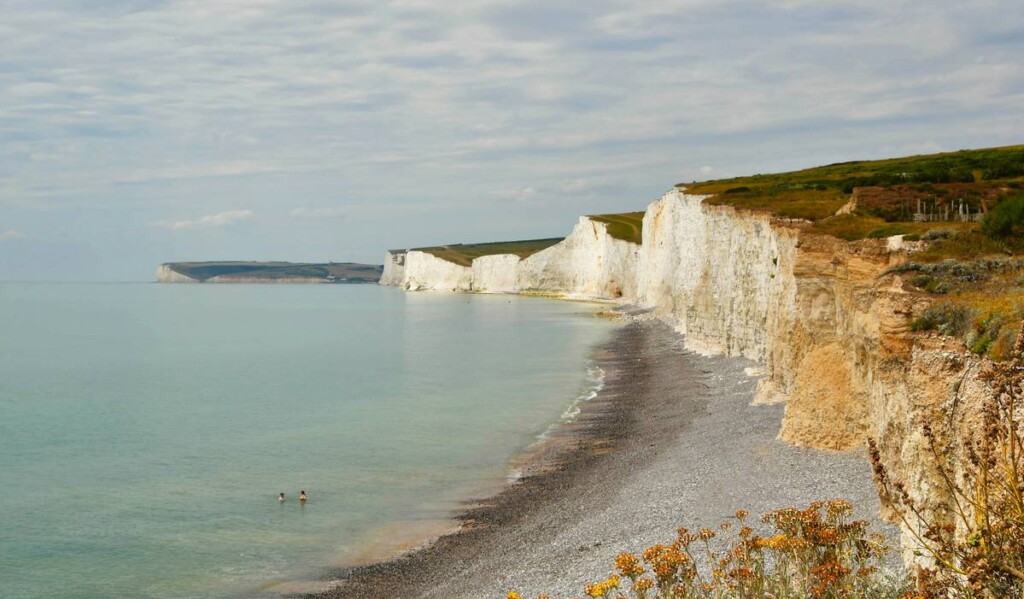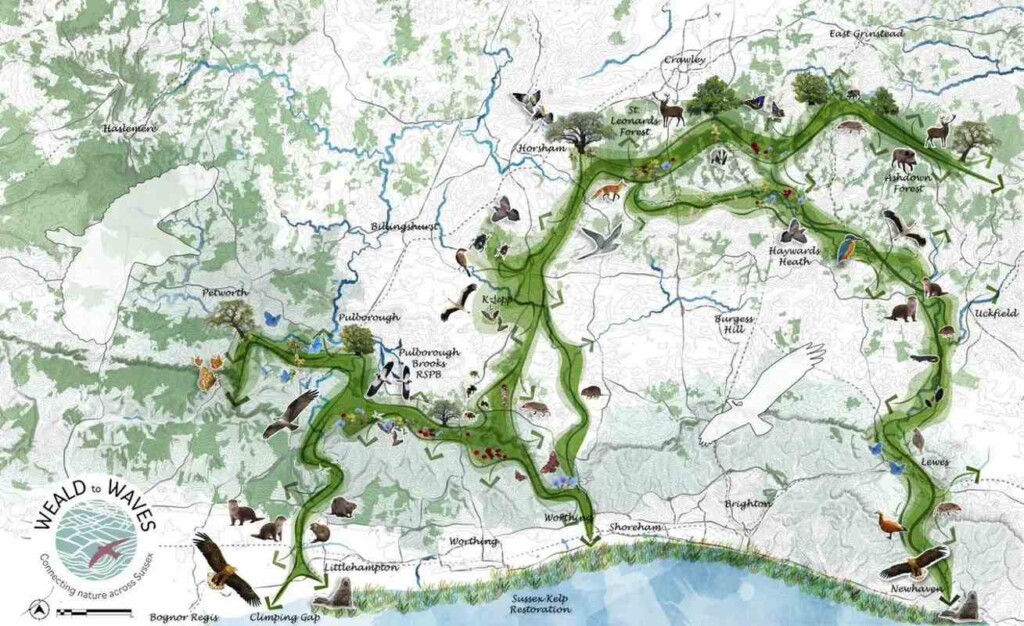‘Give nature space and it will come back’: Rewilding Returns Endangered Species to UK’s South Coast

A broad coalition of natural trusts, farmers and businessmen, and conservationists are looking to turn the southern English coastline and the lands beyond into a biodiversity hotspot—and success can be seen and felt in the numbers of aquatic species that are returning to the Sussex coast.
The effort follows two major turning points for English nature—one on land and one at sea.
In 2022, a ban on trawling in Sussex Bay that had long been campaigned for was passed after decades of this unsustainable fishing practice destroying mussel beds, oyster reefs, kelp forests, and other anchors of the marine environment.
While that trawling was doing the damage at sea, two rogue landowners were looking to reverse what industrial agriculture had done on a lordly estate called Knepp. GNN reported on the Knepp rewilding project after the fact, and though for years surrounding farmers looked at the manor and grounds like a pariah state, their success in restoring a pre-agricultural slice of wild England has become the finest example in the country.
Now farmers all across Sussex are looking to create conditions and corridors through and around their farms that will allow the biodiversity concentrated on the 3,500 acres of Knepp to spill over. The project is called Weald to Waves, and aims to create 10,000 hectares (24,710 acres) of nature-friendly land in corridors running from the rolling hills of the South Downs along the valleys of the rivers Arun and Adur until they reach the sea.
It’s founder, James Baird, owns the last piece on undeveloped coastline in Sussex, and working with the Knepp Estate, he plans to allow their manor lands and the beasts and visitors thereupon to have access through natural environments all the way to the ocean.

Another half of Weald to Waves is the reduction in farming practices that produce agricultural runoff, to help improve coastal water quality.
It’s already had a big effect, as the divers and marine biologists at Sussex Bay initiative are seeing every link in the marine food web coming back. They’re seeing beaches rich with signs of life—cuttlefish bones, kelp, and whelk eggs.
“We’ve had the biggest bed of mussels stretching from Lancing to Brighton,” Eric Smith, of Rewilding Britain who is engaged in the initiative, told the Guardian.
CONTRARY TO COMMON BELIEF: Giving Bits of Farmland Back To Nature Does Not Reduce Crop Yields, Landmark Study Shows
“I saw an electric ray last year and an angel shark, which is critically endangered. First one I’ve seen since 1966. Also the bream are coming back. They are very vulnerable to bottom trawling—and one of the species targeted by the vessels.”
Dolphins and porpoise sightings have gone up two years in a row.
“Previously, we’ve had reports of cetaceans offshore over winter and inshore between May and September,” says Thea Taylor, managing director of Sussex Dolphin Project. “Now we are starting to see them inshore all year round.”
ENGLISH COASTS:GoodNews